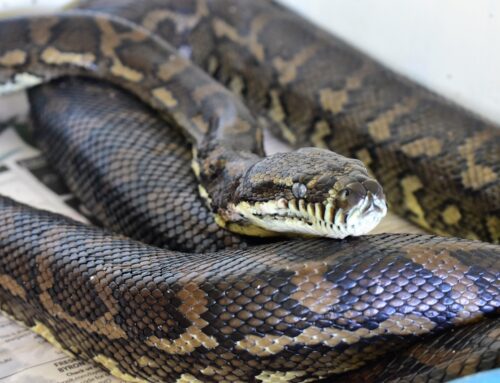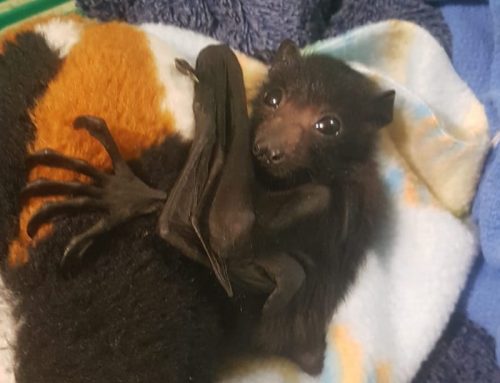Barbed wire poses one of the greatest hazards to wildlife in the Tweed Shire. Since July last year, 145 animals have been rescued from barbed wire fences. Flying foxes, microbats, sugar gliders, squirrel gliders, tawny frogmouths, other birds and even possums have been caught on fences.
Unfortunately, barbed wire often causes the death of native wildlife. Animals caught on fences are at the mercy of predators and the weather. They frequently become dehydrated and it can be hours before they are reported to Tweed Valley Wildlife Carers for rescue.
Many animals are caught on the wing. They clip the fence and become caught on a barb. Because they are moving at speed, the momentum sends them spinning around the wire. This can break delicate wing bones and the injuries are often very traumatic. Flying foxes are particularly at risk because they try to chew themselves free and damage their mouths, often irreparably.
The deaths of these animals are entirely preventable. Barbed wire is ubiquitous in the Tweed. It fences almost every paddock from Chinderah to Clothiers Creek. But it can be lethal to wildlife. Fortunately, it is easy to prevent wildlife becoming caught on barbed wire fences.
The vast majority of barbed wire rescues are for animals that are caught by the top strand of the fence. This is because most animals are caught in flight. Simply replacing the top strand of the fencing with non-barbed or plain wire is enough to prevent most rescues. The fence will still contain cattle!
Barbed wire fencing is particularly hazardous to nocturnal animals because the wire is so difficult to see in the dark. Making the top strand of the fence more visible also saves native wildlife. This can involve painting the wire white or running electric fencing tape along the top strand, non-electrified of course! Residents in the Uki area have had a lot of success tying light-coloured plastic streamers and old CDs to fences in problem areas. These are cheap, effective options for existing fences.
If installing a new fence, also consider its positioning. Animals are far more likely to be caught on fences that run around, along or through creeks and dams. Just last week a TVWC volunteer waded into the middle of Crystal Creek to rescue a flying fox that had been caught on a fence that ran across the creek. Fences that run under or near fruiting plants are also a hazard, as are fences along ridges or hill tops.
If you are installing new fencing or re-fencing your property, consider the simple change to plain wire for the top strand of your fence. Not only is it cheaper than barbed wire, it will also save countless native animals from injury and death.
If you see an animal caught on barbed wire or would like to learn more about wildlife-friendly fencing, call Tweed Valley Wildlife Carers on 0266 724 789. If you do find an animal on a fence, please don’t approach it as it may further injure itself trying to get away. Never try to release an animal or cut its wing. Please call our Hotline and we will dispatch an experienced rescuer trained in barbed wire removals.
Our Hotline is staffed 24 hours a day, 7 days a week. Please call TVWC for all injured, orphaned or distressed wildlife.



Leave A Comment